In the Autumn of the Year
By John Palka — Posted November 4, 2018
In the rolling country south of Minneapolis lies a farm that has been in the ownership and care of one family since 1905—a Minnesota Century Farm. It is home to the Prairie Oaks Institute, a wonderful retreat center that hosts inspiring programs.
My wife, Yvonne, and I recently attended a program at Prairie Oaks. Among the readings we were given in preparation for our two days of exploration was one by Parker Palmer, an extraordinary visionary in the worlds of education, community, and leadership. It was entitled “Autumn” and was taken from a longer piece called Seasons that you can find on the internet. Here are its opening lines:
Autumn is a season of great beauty, but it is also a season of decline: the days grow shorter, the light is suffused, and summer’s abundance decays toward winter’s death. Faced with this inevitable winter, what does nature do in autumn? She scatters the seeds that will bring new growth in the spring—she scatters them with amazing abandon.
. . . This hopeful notion that living is hidden within dying is surely enhanced by the visual glories of autumn. What artist would ever have painted a season of dying with such a vivid palette if nature had not done it first?
And then Parker, on the cusp of turning eighty (as I also am), offers the beauties of nature as metaphor and explores the autumn of his own life.
Inspired by the retreat and by Parker’s words, let me take you on a walk through the woods and fields of autumn.
Solitary plains cottonwoods (Populus deltoides, subspecies monilifera, Family Salicaceae) in Teddy Roosevelt National Park glow in the evening light of autumn.
Maples in Minnesota, like these sugar maples (Acer saccharum) and box elders (Acer negundo, both Family Aceraceae), cloak themselves in autumn splendor.
Autumn leaf litter, in this case mainly maple leaves, also reflects the season.
The shorelines of lakes playing host to trumpeter swans (Cygnus buccinator, Family Anatidae) reveal the onset of autumn. This is Lake Rebecca to the west of Minneapolis.
Soon most of the trees in deciduous forests, like these trembling aspen (Populus tremuloides, Family Salicaceae) at the Eastman Nature Center in Minnesota, will shed their leaves.
Nevertheless, a few trees, like this ironwood (Ostrya virginiana, Family Betulaceae) also at the Eastman Nature Center, will keep their dead leaves throughout most of the winter.
Many fruits, with their seeds tucked inside, capture the eye. This is smooth sumac (Rhus glabra, Family Anacardiaceae) at Lake Rebecca. The birds who eat these fruits also scatter the seeds through their droppings. Once winter passes, the seeds will germinate, and the next generation will spring forth. As Parker writes: “Faced with this inevitable winter, what does nature do in autumn? She scatters the seeds that will bring new growth in the spring—she scatters them with amazing abandon.”
Some seeds are tiny, almost lost inside their fruits, but others are sizeable. These are the acorns of northern red oak (Quercus rubra, Family Fagaceae) at the Eastman Nature Center. With their size and weight, many acorns remain in the vicinity of the tree that dropped them, but here it’s hard for them to take root because there is too much shade. Others are picked up by animals such as squirrels and even deer, or birds such as blue jays, and potentially scattered. If they serve as food for these creatures, however, they can hardly contribute to starting the next generation of oaks! How might this work? Read here, or, for a more technical account, here.
Thus, seeds can be scattered by birds and animals, but the winds can do it as well. A fine example is the common milkweed (Asclepias syriaca, Family Apocynaceae). The picture above shows a mature seed pod of a milkweed growing at the Prairie Oaks Institute.
Here is such a pod just opening to release its seeds, also at Prairie Oaks.
And here is a more mature seed pod at Lake Rebecca. The seeds with their fine plumes are ready to fly off on the wind. The plants they will give rise to will feed the larvae of the wondrous monarch butterflies (Danaus plexippus, Family Nymphalidae).
Parker chooses his words well. Nature does indeed approach the cold of winter clad in a brilliant palette of colors. The adults of some organisms die in preparation for the cold; others have ways of surviving but often in a subdued state. Plants, irrespective of whether they themselves live or die, generate cold-resistant seeds, often in great abundance, that will germinate when favorable conditions return. And these plants have evolved a variety of ways to disperse their seeds into the wider world, primarily by means of animals, birds, water, and wind.
Yes, Parker sees it very clearly. In the autumn “She [Nature] scatters the seeds that will bring new growth in the spring—she scatters them with amazing abandon.” When you revel in autumn’s magic, look attentively, contemplate what is before you, and think of Parker’s words.
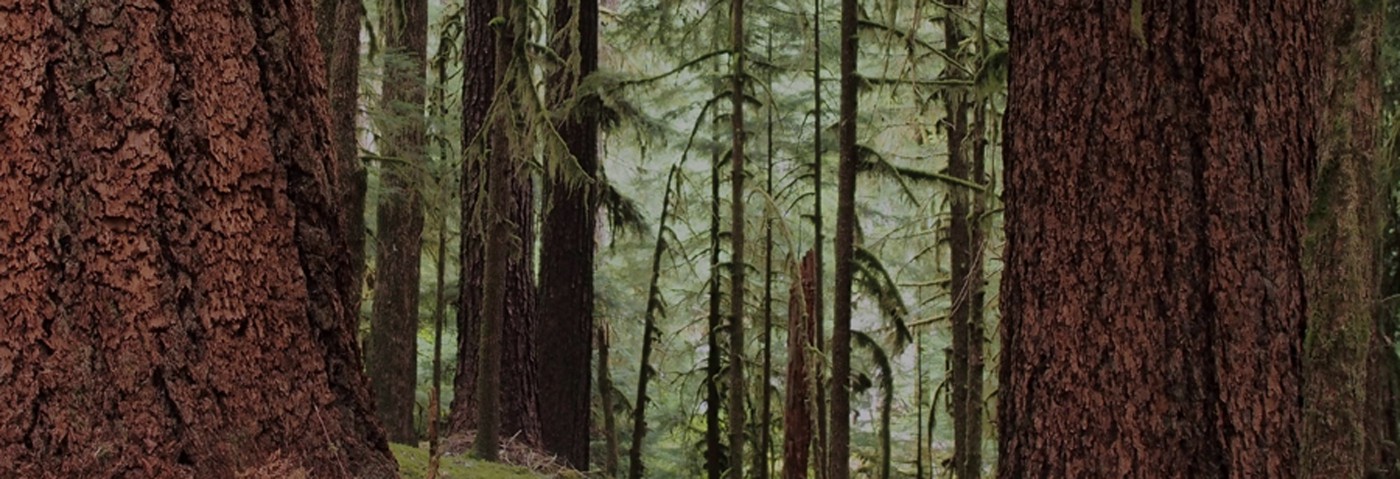
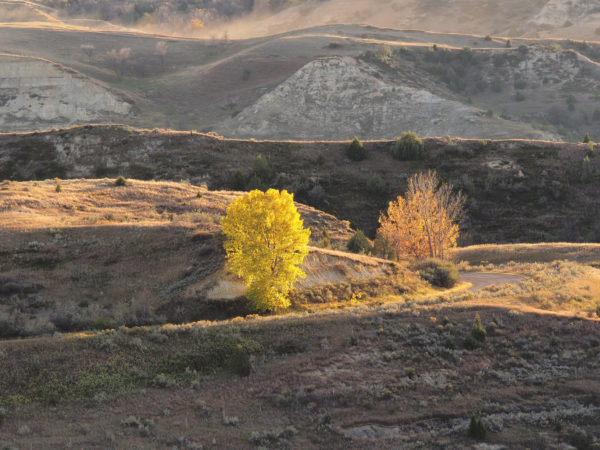
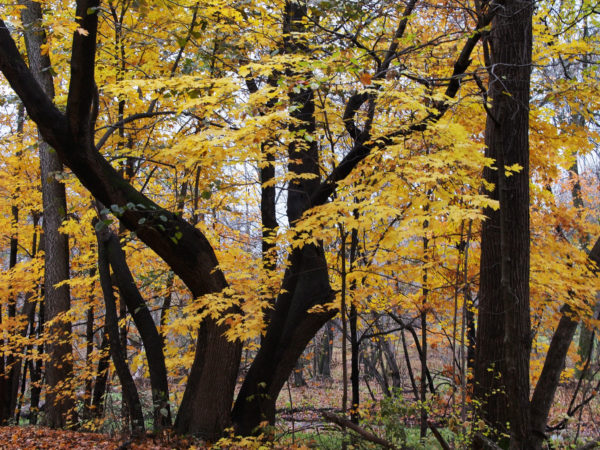
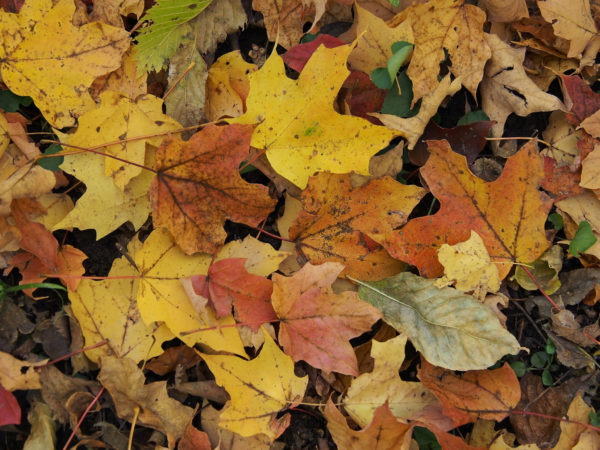

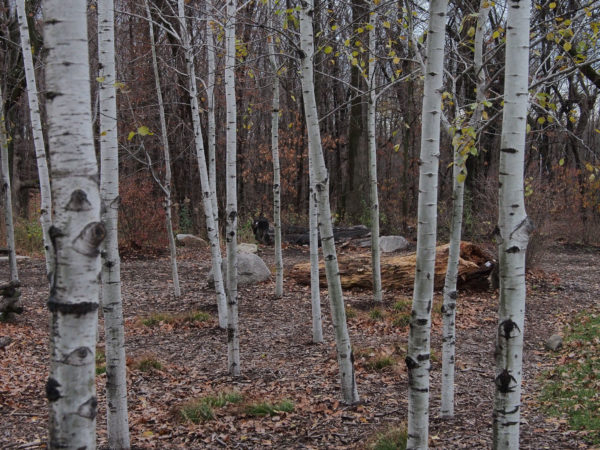
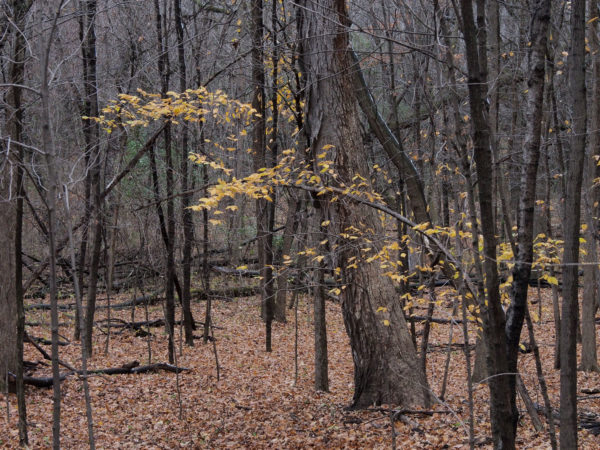
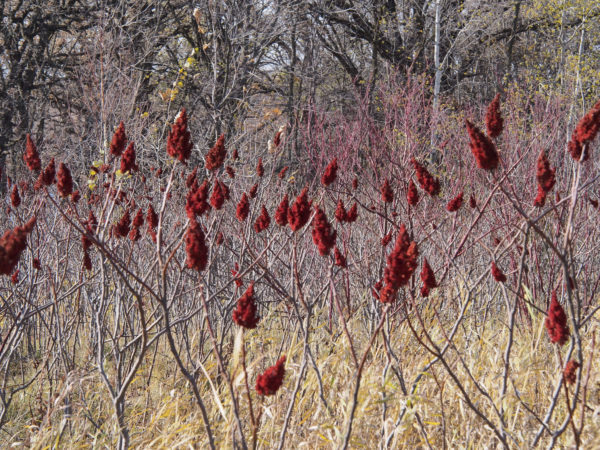
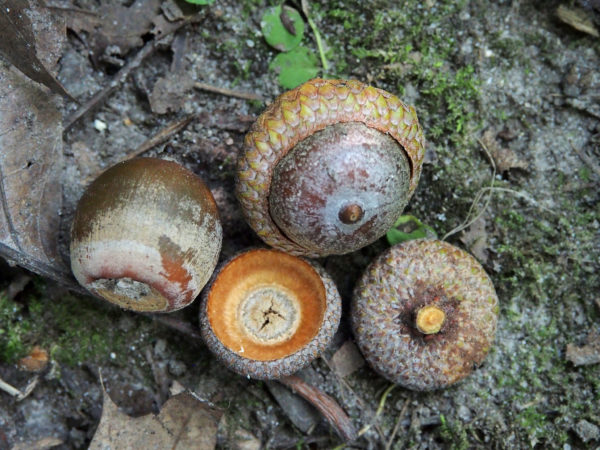
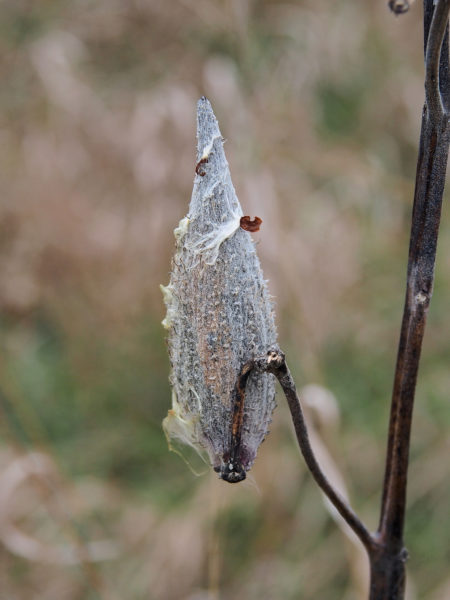
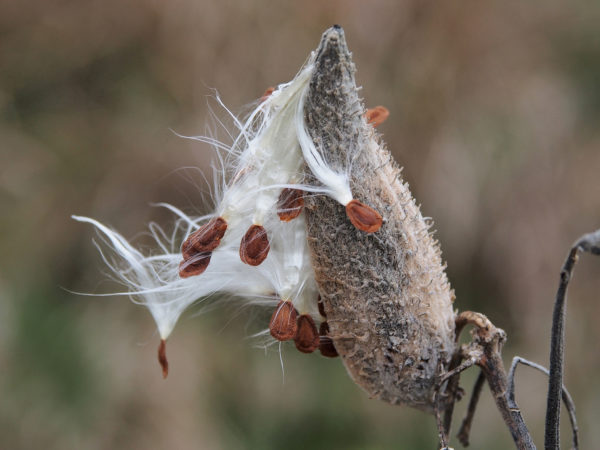
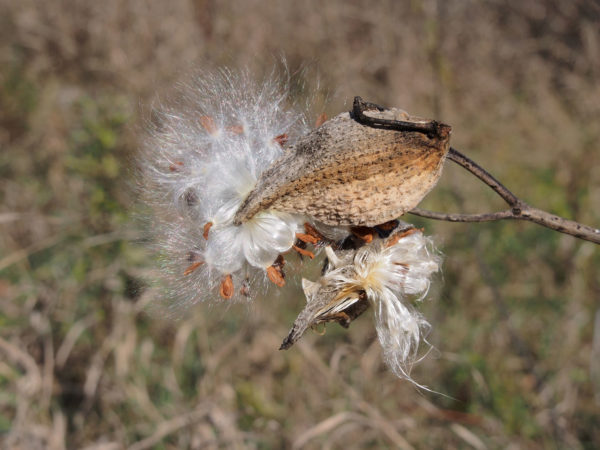
I am noticing the autumn myself, here in Astoria. I live beneath the overstory of bigleaf maples, so the road past my house is paved with bronze, orange, brown, and occasionally red leaves, sometimes sodden with rain but often crisp and light, vibrating in the light breezes. Sometimes I pick up and save ones that particularly please me; most of the time, I just talk to them and tell them how beautiful they are.
What wonderfully vivid words, Kit! Thank you.
COLOR—-Yes..!!!
So lovely—- thanks for a superb assortment and incites..!!
Isn’t it amazing how even muted colors can be beautiful when you start to pay attention!
Thank you for sharing your seeing (all kinds of seeing).
The photograph of the cottonwoods in the layers of hills is so beautiful.
Thank you, Karen. It was Mother Nature who so joyfully sat for her portrait!
Thank you for including me in your mailings, John. I, too, find Nature to be my deepest and most constant teacher, and Fall is filled with metaphor and truth.
And winter also.
Just finished Parker Palmer’s latest book.
Still hoping to visit you and Yvonne in MN. Trudy